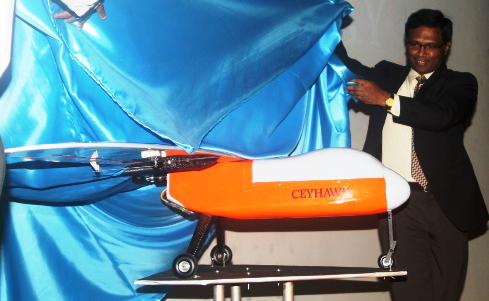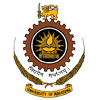The Department of Electronic and Telecommunication Engineering has been engaged in Unmanned Aerial Vehicle Technology Development since 2007. First autopilot was successfully tested on 12.12.2012, First medium scale UAV named RAVAN was flight tested for aerodynamic stability on 2nd February 2014, was autopiloted on 6th July 2014, was sent beyond visual range under autopilot control on 1stOcober 2014. So, far RVAN has undergone forty flight tests without a single crash incident.
Up to now, UAV research has been conducted in the Robotics Laboratory, and it was somewhat outstanding for the Department to formally open its UAV Research Laboratory, which eventually took place on 15th December 2014. Vice chancellor graced the occasion as Chief Guest, and unveiled the new UAV named CEYHAWK. Officials from other institutes such as MoD, CAA, SLAF, CRD, NSF, NRC, NERDC, ACCMT, COSTi took part in the event. A comprehensive video on the UAV research history of the Department was played during the event. Dr. Pasqual. Head of Department welcomed the audience, and Prof. Rohan Munasinghe delivered a speech on UAV research and Development in recent times. Vice Chancellor appraised the initiative and congratulated the UAV team and Department. The new UAVResearch Laboratory will facilitate undergraduates and graduate students to engage in UAV research in a better and more conducive environment. Department is expected to link up with potential collaborators in the UAV field through this Laboratoory.
CEYHAWK is more aerodynamic, pleasant looking, and light weight than its predessor RAVAN. It is able to fly about 30minutes, at cruise speed of 75kmph covering 35km in round trip. Department is now in the process of commercializing CEYHAWK and introduce it to the international market as a high-tech product from Sri Lanka.




